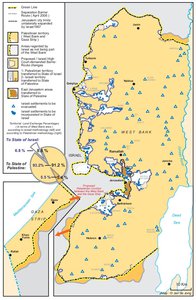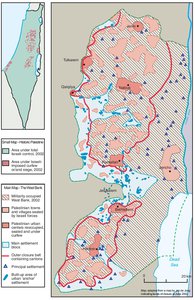THE REINVASION OF THE PALESTINIAN TERRITORIES, 2001-2002
Map Details
As the Intifada entered its second year, Israel’s overwhelming military supremacy was increasingly brought to
bear upon the scattered and encircled Palestinian population centers. Israel took a series of concerted steps to
deconstruct Palestinian political and economic structures: assassinating leaders; escalating incursions into PA
areas; stepping up its air raids on infrastructure and urban residential areas; and conducting a diplomatic
offensive aimed at undermining the Palestinian leadership. In the latter endeavor the Sharon-Peres partnership
was particularly successful, with the all-important US refusing to even meet President Arafat and refraining
from engagement aimed at ending the conflict. While US Secretary of State Powell told Sharon, “your restraint
gives us hope,” Sharon assured the world that, “[i]n this government we do not threaten, we act.” Pursuing a
policy the ICRC termed “one of the worst human rights violations that one could possibly imagine,” between
September 2000 and the end of 2001, Israel executed some 66 prominent Palestinians, including peace
activists, politicians and public figures. By mid-summer 2002, 1,656 Palestinians had been killed and nearly
20,000 injured. Less than 20% of the dead belonged to the PA security forces.
Some 35 years into the settlement program, Israel’s web of seized land under exclusive Jewish control made
up 41.9% of the West Bank. Comparing this figure to the 1.7% of actual built-up area occupied by settlements
illustrates the pivotal role of the illegal program in defining the destiny of the indigenous population. The
2,345,900 dunums of West Bank land under Israeli settlement council jurisdiction already made a mockery of
the 1,000,800 dunums (Area A) the Palestinians had achieved partial autonomy over after a 54-year struggle.
By mid-2002, Israeli forces had retaken even this area and the last vestiges of the minimal Oslo land transfers
were reduced to the disintegrating PA’s control of 60% of the Gaza Strip. The destruction of homes, leveling of
land, sealing of wells, and closure of villages, which characterized Israel’s response to the Intifada, brought the
social and economic situation in the OPT to near collapse. By February 2002, the agriculture sector alone had
suffered Intifada-period losses of over $500 million; some half-million trees had been uprooted and over 32,000
dunums of cultivated land razed. The scores of new military checkpoints imposed across the OPT petrified
Palestinian lines of communication. By April 2002, figures showed 84.6% of the Gaza Strip and 57.8% of the
West Bank population to be living in poverty.
Having told US President Bush, “Arafat is our Bin Laden,” the Israeli government launched its first full-scale reinvasion
of PA territorial pockets in March. Over four weeks, the army occupied every West Bank town and
city, systematically destroying PA infrastructure, financial institutions and ministries. The onslaught claimed
some 500 lives and left the PA materially and politically bankrupt. The Israeli reaction to the Intifada, itself born
of the frustrations and transgressions of the stalled peace process, came as the ultimate expression of its
refusal to afford the Palestinians their right to self-determination in the 22% of historic Palestine comprised by
the OPT. There, in the 12 months preceding the reinvasions, 40 new settlement sites were established.
The US responded to Israel’s first reinvasion and assault on the PA by declaring Sharon a “man of peace,” and
- in late May 2002 - announcing that the US Administration no longer believed the two-state solution discussed
during earlier final status talks viable. Instead, it suggested Israel “introduce some kind of future” for the
Palestinians. Prime Minister Sharon flew to Washington shortly after this State Department declaration and
met with President Bush to lay out his vision of that ‘future’. As he did so, the repercussions of Israel’s
excesses during its military campaign came to Israel in the form of a string of militant attacks on Israeli targets.
Bush came swiftly to Sharon’s side and, in a speech delivered in late June, gave the Israeli hard-line
government a green light for the final destruction of the PA that took even its most ‘hawkish’ members by
surprise. Calling upon Palestinians to ‘elect’ “a new and different Palestinian leadership,” as a precondition for
peace talks, while endorsing the Sharon-Peres government’s actions thus far, the speech came as the clearest
expression of US support for Israel’s destruction of the elected Palestinian leadership and its bodies. It was
followed within days by the total re-conquest of the West Bank, the hermetic closure of its individual village
clusters and the imposition of curfews. Untold thousands of Palestinians were arrested, detained without trial
and imprisoned in the reopened desert prison camps that earned notoriety in the first Intifada.
In July 2002, Israel began unilaterally implementing a series of ‘border adjustments’ along the Green Line and
around Jerusalem, while ringing the enclosed Palestinian villages and towns with a security cordon of
checkpoints and fences. Meanwhile, settlement outposts continued to proliferate and thicken, as areas of
exclusion imposed upon Palestinian rural communities robbed them of access to their livelihoods and heritage
for a critical third olive-harvesting season. As this book goes to print, drastic and long-term alterations are being
imposed by force upon the land, resources, leadership and destinies of the Palestinian people. They are being
imposed with a staggering degree of international complicity by an Israeli government of both ‘left’ and ‘rightwing’
parties, united in a shared agenda which offers the indigenous population of Palestine nothing more than
endless military occupation, colonization and exploitation. The facing map offers only a glimpse at what is an
unraveling process of devastation and cantonization unprecedented in the history of the Israeli occupation and
set to redefine the future of the conflict.
Related Maps
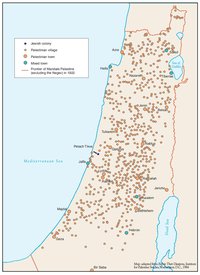
OTTOMAN PALESTINE, 1878
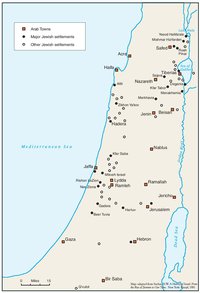
ARAB TOWNS AND JEWISH SETTLEMENTS IN PALESTINE, 1881-1914
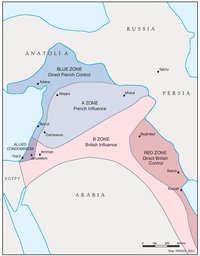
THE SYKES-PICOT AGREEMENT, 1916
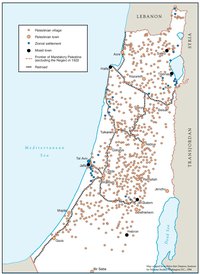
THE BEGINNING OF THE BRITISH MANDATE, 1920
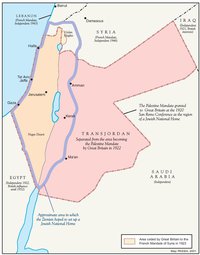
PALESTINE UNDER THE BRITISH MANDATE
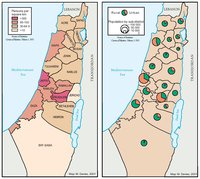
THE DEMOGRAPHY OF PALESTINE, 1931
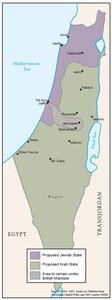
THE PEEL COMMISSION PARTITION PROPOSAL, 1937
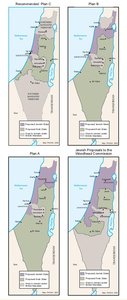
THE WOODHEAD COMMISSION PARTITION PROPOSALS, 1938
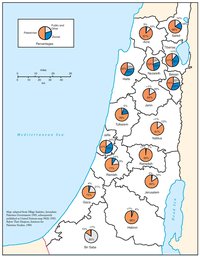
PALESTINIAN AND ZIONIST LANDOWNERSHIP BY SUB-DISTRICT, 1945
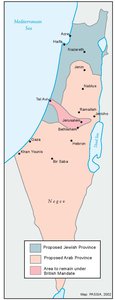
THE MORRISON-GRADY PARTITIONED TRUSTEESHIP PLAN, 1946
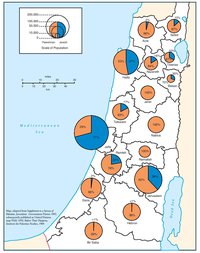
POPULATION OF PALESTINE BY SUB-DISTRICT, 1946
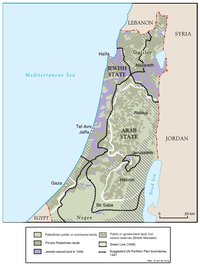
LAND OWNERSHIP IN PALESTINE, 1948
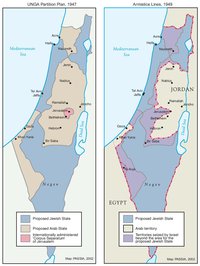
THE UNGA PARTITION PLAN, 1947 – THE 1948 WAR & THE 1949 ARMISTICE LINES
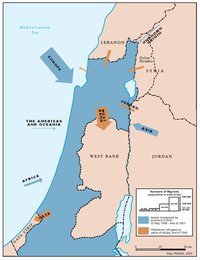
POPULATION MOVEMENTS, 1948-1951
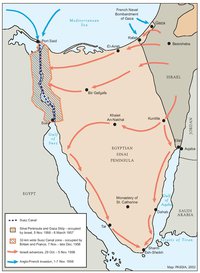
THE SUEZ WAR, 1956
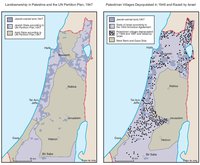
LAND OWNERSHIP IN PALESTINE AND THE UN PARTITION PLAN - PALESTINIAN DEPOPULATED AND DESTROYED VILLAGES, 1948-1949
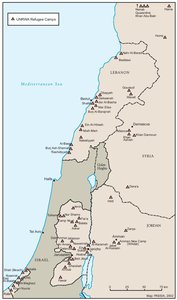
THE PALESTINIAN DIASPORA, 1958
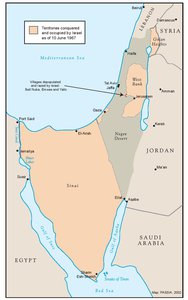
THE NEAR EAST AFTER THE JUNE 1967 WAR
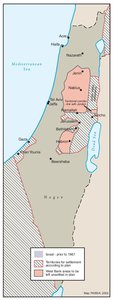
THE ALLON PLAN, JUNE 1967
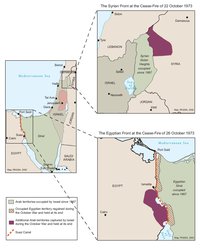
THE OCTOBER WAR, 1973
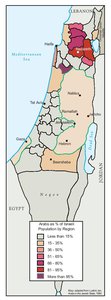
THE PALESTINIANS INSIDE ISRAEL, 1977
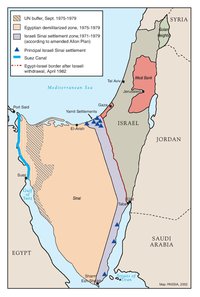
THE CAMP DAVID ACCORDS, 1978-1979
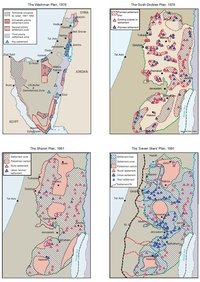
ISRAELI SETTLEMENT MASTER PLANS, 1976-1991
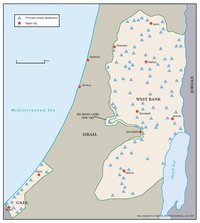
THE 1991 MADRID PEACE CONFERENCE & ISRAELI SETTLEMENTS
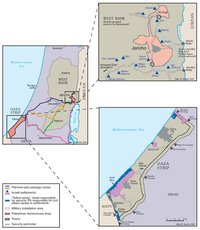
GAZA-JERICHO (OSLO I) AGREEMENT, CAIRO, 4 MAY 1994
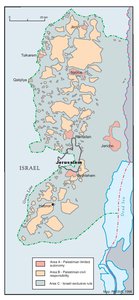
INTERIM (OSLO II) AGREEMENT, TABA, 28 SEPTEMBER 1995
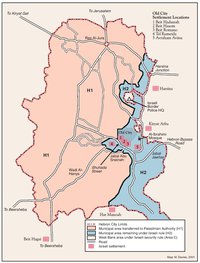
HEBRON PROTOCOL, 15 JANUARY 1997
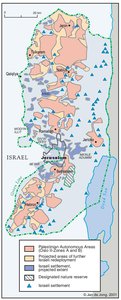
WYE RIVER MEMORANDUM, 23 OCTOBER 1998
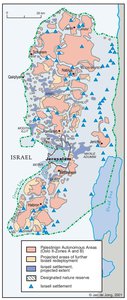
SHARM ESH-SHEIKH AGREEMENT, 4 SEPTEMBER 1999
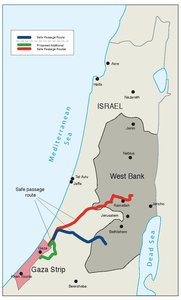
PROTOCOL CONCERNING SAFE PASSAGE BETWEEN THE WEST BANK AND THE GAZA STRIP, 5 OCTOBER 1999
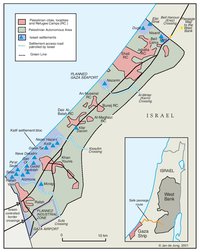
GAZA, 2000
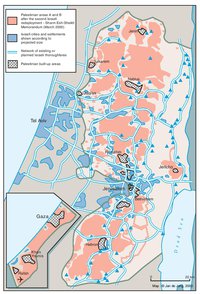
WEST BANK AND GAZA STRIP, MARCH 2000
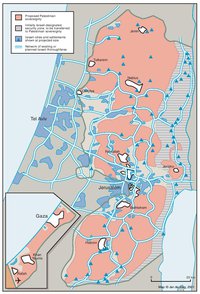
CAMP DAVID PROJECTION, JULY 2000
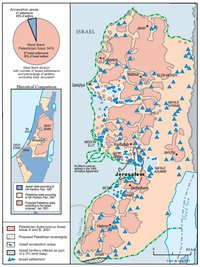
TABA TALKS PROJECTION, JANUARY 2001
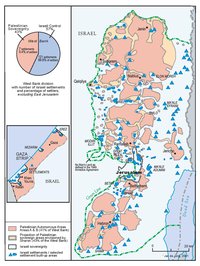
THE SHARON PROPOSAL, SPRING 2001
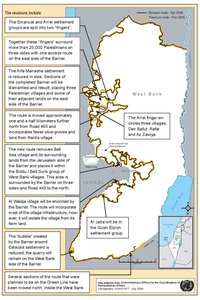
THE ROAD MAP, 2003
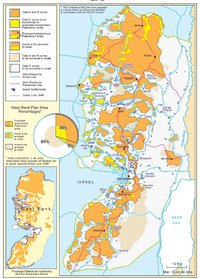
THE GENEVA INITIATIVE AND ACCORD, 2003
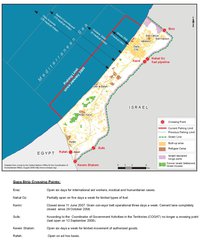
THE ISRAELI DISENGAGEMENT PLAN, 2003-2005
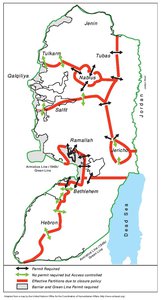
AGREED DOCUMENTS ON MOVEMENT AND ACCESS FROM AND TO GAZA, 2005
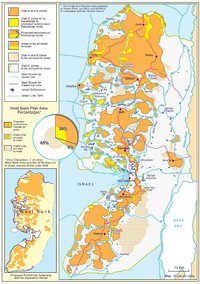
THE SETTLERS' PLAN FOR PALESTINIAN AUTONOMY, 2006
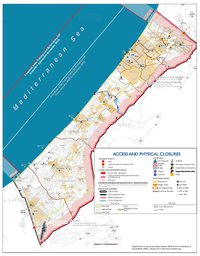
THE GAZA STRIP TODAY (2014)
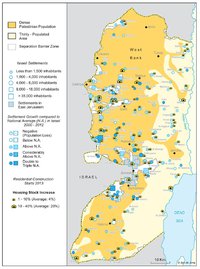
THE WEST BANK TODAY (2014)
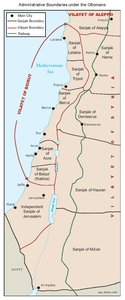
ADMINISTRATIVE BOUNDARIES
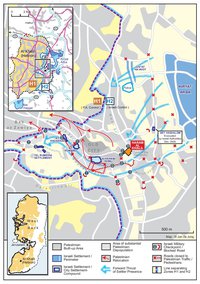
HEBRON
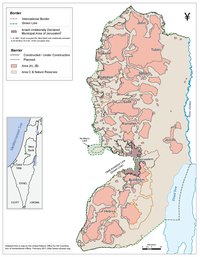
Area C
